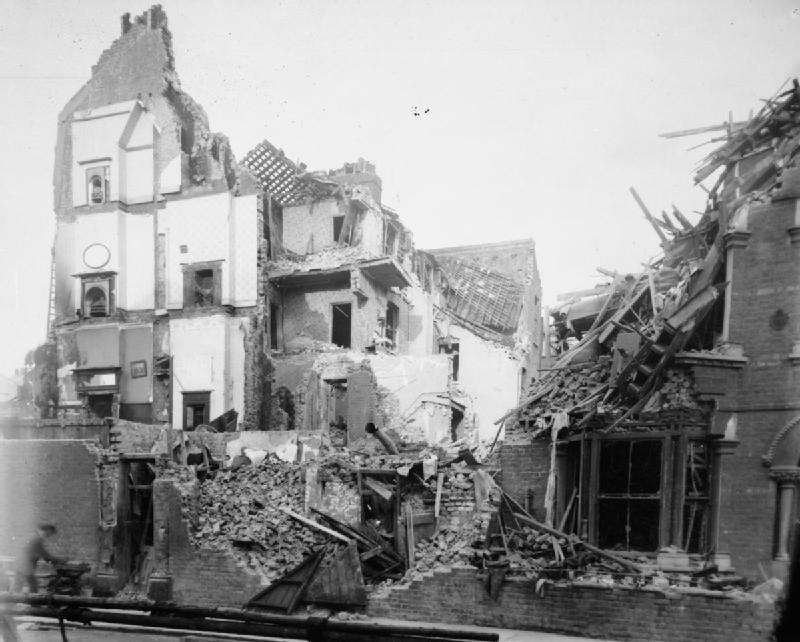
Bomb damage contributed significantly to the formation of Burgess Park. In 1917, a Zeppelin raid destroyed 3 houses, killing 12 people. During World War 2 the area was again damaged by bombers, and later the infamous V1 ‘doodle-bugs’ and deadly V2 rockets. Local people were given temporary pre-fabricated housing – known as ‘prefabs’.
Stop Press:
Also see our new Zeppelin events and web pages here
During World War One (1914-1918), for the first time airborne bombing was used extensively by both sides. Initially the German leader, Kaiser Wilhelm II, forbade London as a bombing target lest his close relatives, the Royal family were affected. The Kaiser’s protective policy towards London changed in May 1915 following British raids over Germany. The Germans used enormous airships, the legendary Zeppelins, to drop bombs over England. This 1915 recruitment poster (below) uses fear of Zeppelin raids to generate a patriotic response.
On the night of 19th October 1917, Navy Zeppelin L45 dropped a 300kg bomb which destroyed a row containing three houses, a fish and chip shop and a doctor’s surgery, killing 10 people and injuring a further 24.
‘My father worked at Philips Radio factory at Croydon and on some occasions had to walk to work (from Walworth) about a twelve mile walk. He was a very proud man who served in the army in the 1914-1918 war. It was a traumatic time of his life which he was unable to talk about. During this period his girlfriend Alice Glass was killed when German bombers in a raid on South London dropped a 300kg bomb on Calmington Road at the junction of Albany Road, Camberwell, killing twelve people on 20th October 1917. Incidently, there was a memorial built into the wall of the building which replaced the one which was destroyed …’
from Home is Where your Story Begins by Mr. Story
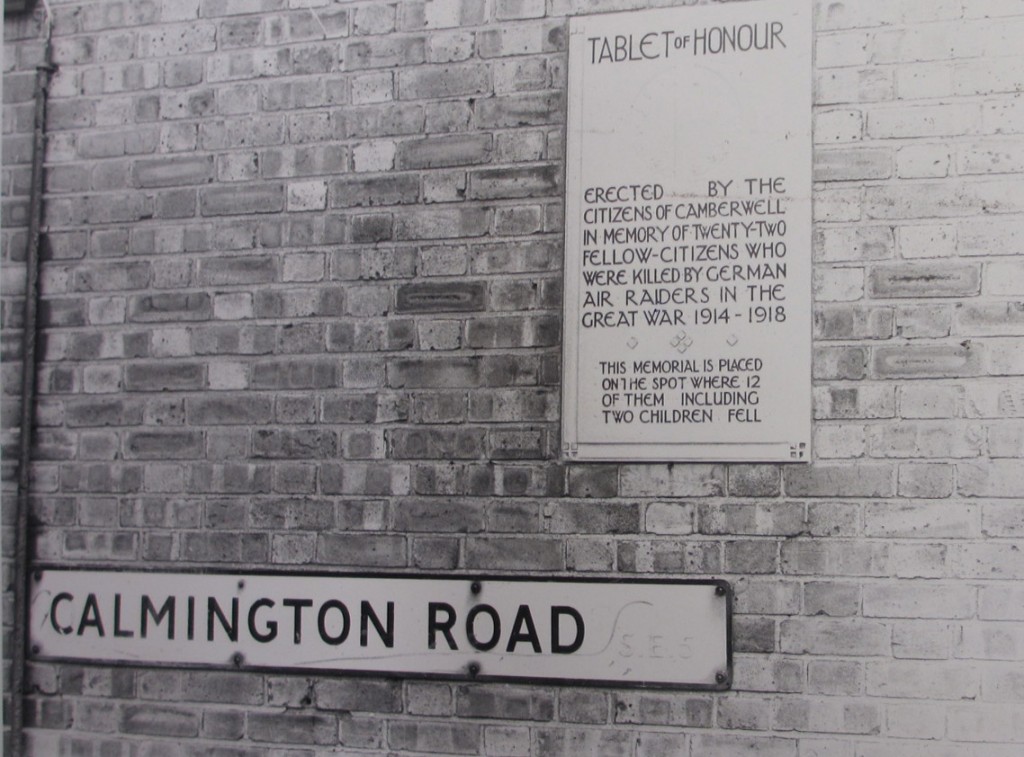
The loss is even more tragic as we know now that devastation was entirely incidental; L45’s intended target was industrial Sheffield, but southerly winds blew the airship wildly off course. L45 had already bombed Hendon, Piccadilly Circus and went on to Hither Green.
The L45 Zeppelin measured 196.3m in length (almost two football pitches end to end).
For the Germans, the raid was a disaster. On return, the L45’s crew force landed in the French Alps and surrendered. The ship itself was destroyed in the process. The raid was the last large scale Zeppelin raid.
See pictures of the the L45 Zeppelin and its captured crew here.
In total, World War 1 air raids over the UK caused 1,413 deaths and 3,409 injuries. Psychologically the damage ran far deeper – for the first time, civilians were also in danger – not just front line soldiers.
World War 2
The bombing of London during World War 2 (1939-1945) fell into two phases; firstly the infamous Blitz (German for “flash of lightning”) September 1940-May 1941. Huge swathes of the industrial London such as Docklands, including the nearby Surrey Docks, simply went up in flames under the onslaught of incendiary bombs. The Luftwaffe (German air force) used the Thames to navigate and it’s likely that canals, such as the Surrey Canal, served likewise.
After June 1944, a second phase of bombing began with something new: unpiloted devices; firstly the V1 flying bombs (aka “doodle-bugs” – which made a distinctive buzzing sound in flight) and from September 1944, the first ever long range ballistic missiles, the V2. Defence was almost impossible: the V2 travelled at 3000 mph plus and could achieve an altitude 50 miles or more, from mobile sites in occupied France and Holland. Whereas the Blitz raids usually caused fires, the V1 and V2s created blasts upon impact, a far more deadly and destructive force.
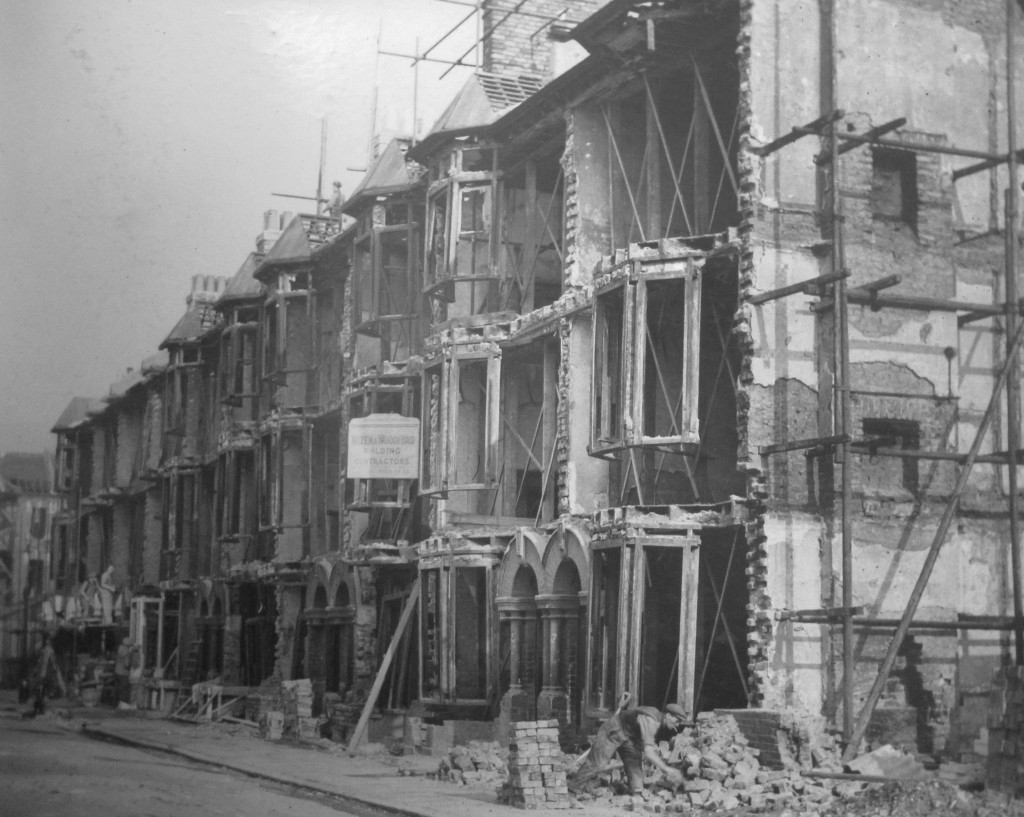
One of the worst single episodes was the total destruction of Cunard Street (which was to the west of Chumleigh Gardens, by Wells Way) on 10th May 1941. The Watkins Bible Factory was also considered beyond repair. The centre of what we now know as the Park (the open playing field) was particularly badly hit. See here for the full extent of WW2 bombing in the Burgess Park area.
By the end of the war, some 100,000 families had lost their homes in London (Roy Porter p428). Even before the war was over, in 1944 an Act of parliament granted local authorities the compulsory right to purchase bombed areas. Alongside this, a vast master plan for a new London by Patrick Abercrombie highlighted the need for green space in this part of Southwark.
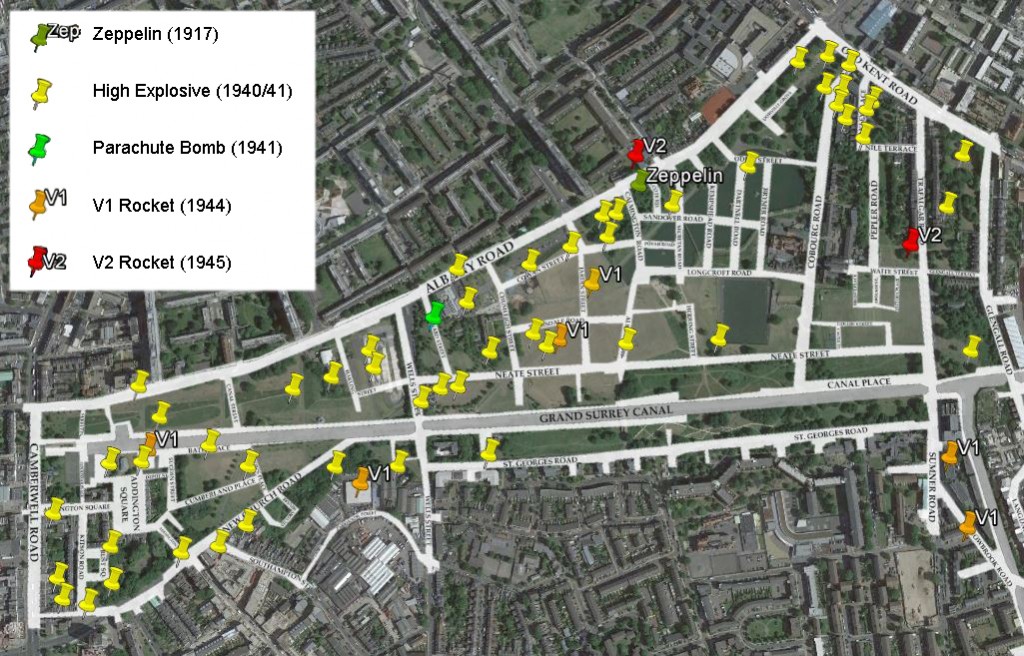
Bomb damage from WW2 had a hand in the eventual birth of Burgess Park and also the high rise buildings we see today in the Aylesbury estate. As Lord Birkett (former Director of Recreation and Arts, GLC) said looking back to this era of destruction, “When all this is over, we’ll make this a better place to live in. We’ll give some greenery to people who haven’t got any, [to] make up for what they’ve been through”.
Listen to people’s memories of bombed buildings here.
Find out more: 
Sources:
Zeppelin stats: https://www.zeppelin-museum.dk/main.php?page=airships&id=l-45&lang=en
V2 bomb hits on Albany Road and Trafalgar Avenue: https://londonist.com/2009/01/london_v2_rocket_sitesmapped.php
Museum of London archaeological dig on Trafalgar Avenue V2 bombsite: https://www.museumoflondon.org.uk/collections-research/laarc/community-excavations/burgess-park-community/
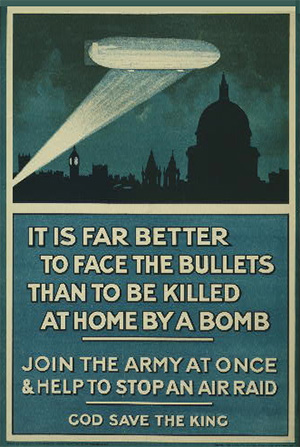
2 of my brothers were killed in the raid on Albany Road in 1917. Their names are on the plaque in what was Calmington Road. We’ve had a name change. It was Balls. It seems a film exists of that raid. Do you know where it is ? There was a 1/4 mile procession afterwards. Have you details in your archive? P. Boyce.
Hi Peter
Fascinating information, thanks for sharing it. Unfortunately, we’ve not heard of the film. The IWM – War Museum – in Kennington would be a good place to look for a copy of the film – they certainly have photos, one of which we’ve used here. The Southwark Local History Library in Borough High St should have information of the commemoration procession, very likely. I’ll try and get there to look it up. Watch this space!
Hello,
I am a primary school teacher and over the next few weeks my class will be learning about the affects of World War 2 in South London
Would there be any chance you could please come in and speak with my class? I would very much appreciate it.
Has anyone any information on Alfred Fowler or Able Seaman Glass?
The worst single episode as you describe it, of Cunard St, was where my father lived. He was in the house at 18, Cunard St when the Land Mine went off. His father, mother, brother and sister all died in the house and he was buried by the rubble and was recovered from the remains of the house sometime later. His other brother had been evacuated to Somerset. His father who died worked at the R.Whites factory that was also hit and there was a suggestion that he actually wasn’t in the house at the time but was in the factory that had been hit by incendiaries and died trying to save the lorries in the factory.
Thank you, Alan, for the personal information. It really helps to show how much it must have affected real peoples’ lives. There are interesting accounts of that terrible night of 10th May 1941 in London here: Time Out and here
My Grandfather Charles Taylor lived at 2 Cunard St. I don’t know much about the bombing but my father and Aunts were all evacuated. He also worked at R Whites.
I grew up in that house in the picture, (47 Dartnell Road)
Used to play on the bombsite next door.
My Dad and his family lived at 19 Dartnell Road.
Hi. I too lived in Dartnell Road, number ten, and played on the bomb site. I remember bonfire night sat in Mum’s bedroom watching the bonfire and fireworks. Ice lollies from Nell’s shop, school was just around the corner.
My cousin Jennifer Linarus lived in No 5 she would be 66 years old now
Hi, I too lived at 10 Dartnell Road, top floor. I was born in the front bedroom! Also remember the ice lollies from Nells shop and played on the bomb site opposite. Good and sad memories.
Hello I was born 1949 in Darnell Road. SE5 I think it was 29. Our family name was English
My Grandparents, Edward and Ellen Gould lived at 25 Calmington Road. My Grandma was born there in 1895 and her parents Francis and Mary Ann Smith moved there around 1890 from 28 Neate Street. Francis was the maintenance man for several of the houses in Calmington rd and acted as agent for the landlord. My mum Margaret and her brother Derek grew up there during WW2. I remember them telling me stories of the doodlebugs and hiding under the kitchen table during the raids. My Uncle used to play on the bomb sites and collect shrapnel.
During childhood visits in the 70s I remember seeing bomb damage cracks that had never been repaired. Watching the horse drawn rag and bone carts was a regular treat too, although the outside loo was not! They retained the coal range in the kitchen as only source of cooking and ironing and gas lighting throughout their part of the house, right up until the houses were eventually pulled down.
Hi Deborah. I lived at 3 Longcroft Road, around the corner. Jennifer Somers had a brother David. My friend at school Lorna Gould’s grandparents lived in Calmington Road. Lorna lived in Ilderton. Went to Trinity House.
Hi Jenny,
I notice you lived at 3, Longcroft Road and wonder if you knew of a Robert Williams or Alice Parrett who lived at no. 6, Longcroft Road,
Thank you
Susan
Hi. Sorry I don’t remember them. I will ask my Dad.
Hi Jenny, small world! Lorna is my cousin, she and her husband now live in the West Country. She’s the oldest of 6 spanning about 13 years and I’m about a year younger than her youngest sibling. I remember visits to Ilderton Rd, with the train running past the garden, as noisy family occasions. Her brother and mum still live locally.
Hi Deborah, Thanks for replying. Lost touch with Lorna when I moved to Bromley. We now live in NE Essex
Only four years late to comment on your post, but I lived at no.1 Sandover Rd, which was next to the bomb site. Used to play on it all the time, I remember a huge crack on the side of our house that was never repaired, it must have been caused by one of the bombs. The fire brigade came round one year because the bonfire that everyone used to build on bonfire night was so big they thought it might make the house collapse!
Hi. Sorry, I don’t remember them. I will ask my Dad. Hi. I remember this. They came and put it out and we had been collecting firewood for weeks.
Hello Danny,
I’m Steve Wilton lived at 11 Sandover Rd. I remember you and your brother and the bombsite next to your house there. Do you remember the bonfires on Guy Fawkes night and the hardcore play area where we used to play football and cricket?
Stood there and watched them putting it out. We collected for weeks. I think we had our fireworks outside my Nan’s house, 5 Silcote Road, that evening, when my dad came in from work. A family from Sandover Rd looked after my cousin Gary Somers when he was a baby, for my Aunt Margaret. I don’t know the family name.
My wife and I lived in a flat at 1 Calmington Road in 1978. We lived there for about a year. The flat was very haunted. Several ghosts would pass through the place. It was not a good experience. The Flat was a couple of yards away from the commemorative plaque. The building next to us had been bombed by a Zeppelin. Happy memories though.
This is really interesting and chimes in with the plans of Friends of Burgess Park to commemorate the Zeppelin bombing in this centenary year. Could you get in touch with us directly, please, by email to friendsofburgesspark@gmail.com? Many thanks
My grandmother was injured by the 19th October Zeppelin bomb on Albany Road where she lived. She was near the Fish and Chip shop when the bomb hit. She was carried by a police officer to the safety of R Whites. That police officer later became my grandfather. My grandmother told my mum that her friend was killed during this raid, I think it might have been Alice Glass.
In researching the family history I found that my great grandfather moved to London in the 1930s and lived at 6, Longcroft Road (now demolished) until his death in 1959, together with Alice Parrett, I assume his partner but possibly his landlady. She had a daughter Joan, later Joan Bradley. I would love to know more about them but it’s probably too late now.
I was fascinated to find this out and also by the history of the park’s creation. Thanks for creating such an interesting site.
My late husband’s grandfather Robert Williams lived at 6, Longcroft Road together with Alice Parrett.
I lived in Lewis Trust Flats, Warner Road, Camberwell Green in 1940. One Sunday midday the siren went, my mother and my pal (we had just come home from cub church parade) stood in the passage of the flat. A bomber came over so low it shook the flat and we thought it was going to crash into the flats or the bus garage opposite. It passed over, but dropped its bombs on our flat. When the all clear went my pal and I went out to play stepping over fire hoses and debris from the walls of the bombed flats. We then heard the ARP man (our porter) say to a policeman that the German plane had no tail on it. He thought it was going to hit the bus garage. The story goes that the RAF pilot chasing the plane had no ammunition so knocked its tail off with his Hurricane wing. The Dornier crashed into Victoria Station. Two surviving German crew were captured.
That’s a really great story – thanks for posting it! Apparently the event took place on 15th September, 1940. You can read more about it here: https://www.independent.co.uk/news/uk/this-britain/unearthed-story-of-the-ww2-pilot-who-saved-the-palace-562669.html. It’s covered, with ‘considerable artistic licence’, in the film Battle of Britain.
In 1934, according to electoral register, my grandparents John and Beatrice Kate Hills, were living at no 55, Block E, Lewis Trust Buildings, Warner Road, Camberwell. Their children were Joan and Maurice. John was killed in an accident between his bicycle and bus (no inquest available) but presumably Kate and the children were still there in 1940 as I know that they were bombed out of their house. Is this why when I look on Google maps there is a big chunk of one of the buildings missing?
We also had a Frank Simmons born 1926 Southwark district so I wonder if there is any connection?
This is a wonderful insight to the times and the extreme bravery of the wartime population. In my opinion they are or were all heroes. We do not appreciate what we have today and how very difficult and dangerous life was in wartime. My son has recently moved to a house in Paulet Road and I have become very interested in the history of the area.
Hi, Iris, how right you are, the people I knew were brave during that war. Never had much of a choice of course, so carried on as best we could. Some schools, like the one in New Church Road, Camberwell, could only offer us primary school children some shelter beneath the desks when bomber planes flew overhead, but luckily we came through it. Directly opposite, was a deep, round water container which was there for the use of firefighters to put out fires caused by the bombs.
Camberwell Green had a few cinemas, Golden Domes, Regal, Odeon, and opposite Lewis buildings in Warner Rd, was the Grand Hall, which us Londoners would call The Grand ‘all. Kind Regards, Sheila
My Grandmother, Phyllis Trevenna lived in Paulet Road with her mother Elizabeth, Father John and 5 older siblings. She was born in 1909. Her Father John Trevenna died from a head injury when he dived into the swimming pool at the end of the road. My Gran’s Grandmother, Frances Trevenna, somehow acquired property in Camberwell Station Road around 1901. Her and her husband John returned to Mevagissey when the first world began. My Gran, her siblings and mother all returned to Plymouth but I think the older brother John and sister Lil continued to live in Camberwell Station Road, Camberwell throughout the war.
Two of my relatives were among the seven killed by the zeppelin bomb that landed on Piccadilly circus Oct 19th 1917. Any idea if there is a memorial dedicated to this event? I cannot find any evidence of one online.
Such an interesting read, thank you!
We have just moved into a house facing onto Brunswick park and wonder if anyone might know more about Brunswick Park/St Giles Road in the same context? We started taking care of a front garden and have a suspicion that we might have a WW2 bunker in there. Would love to connect with anyone who might know more!
Best wishes,
Aleksandra
Does anyone know if Surrey Terrace was bombed? My ancestors lived at no.12